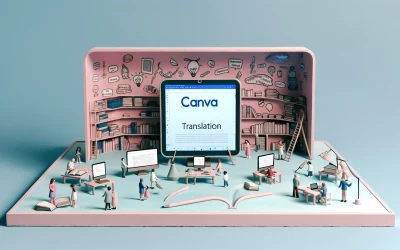ChatGPT is an AI language model developed by OpenAI that can generate human-like responses to prompts. It is a powerful tool that can be used for various purposes, including work-related tasks. ChatGPT can help professionals work smarter, not harder, by generating ideas, providing insights, and automating repetitive tasks.
In this article, we will explore the best ChatGPT prompts for work. These prompts can be used by marketers, writers, sales professionals, and anyone else who wants to boost their productivity and efficiency. Whether you need help with copywriting, content creation, or customer service, ChatGPT can provide you with valuable suggestions and recommendations.
By using ChatGPT prompts, you can save time and effort while achieving better results. You can also train the model to recognize your preferences and style, making it even more useful in the long run. In the following sections, we will present some of the most useful ChatGPT prompts for work and explain how to use them effectively.
Getting Started with ChatGPT
ChatGPT is an AI language model that can generate human-like responses to text prompts. It is a powerful tool that can be used for a variety of tasks, including work-related tasks. Here are some tips for getting started with ChatGPT for work.
Understanding ChatGPT
ChatGPT is an AI language model that uses deep learning algorithms to generate human-like responses to text prompts. It was developed by OpenAI and is one of the most advanced language models available today. ChatGPT can be used for a wide range of tasks, including answering questions, generating text, and even writing code.
Setting Up ChatGPT for Work
To set up ChatGPT for work, you will need to find a platform that supports the use of the model. There are many platforms available, including Hugging Face, AI Dungeon, and OpenAI itself. Once you have found a platform, you will need to create an account and set up your profile.
Once you have set up your profile, you can start using ChatGPT for work-related tasks. Some examples of tasks that ChatGPT can help with include generating reports, answering customer inquiries, and even writing emails. To get the most out of ChatGPT, it is important to provide clear and concise prompts that are relevant to the task at hand.
Effective Prompt Crafting
Crafting effective ChatGPT prompts is an art that requires practice and skill. By following a few guidelines, anyone can create clear and effective prompts that produce accurate and relevant responses.
Asking the Right Questions
The first step in creating effective ChatGPT prompts is to ask the right questions. The questions should be specific and focused on the desired outcome. For example, instead of asking “What is the weather like today?” a better prompt would be “What is the weather forecast for this weekend in New York City?” This prompt is more specific and provides context that helps the AI generate a more accurate response.
Another important aspect of asking the right questions is to provide enough information to the AI. This can include relevant keywords, specific dates or times, and any other information that can help the AI understand the context of the prompt. By providing enough information, the AI can generate more accurate responses that meet the user’s needs.
Prompt Refinement Techniques
Once the initial prompt has been created, it’s important to refine it to ensure that it produces the desired response. One technique for prompt refinement is to experiment with different phrasings and approaches. By trying different variations of the same prompt, users can find the phrasing that produces the most accurate and relevant response.
Another technique for prompt refinement is to use explicit constraints and guidelines. This can include specifying the type of response that is desired, such as a list or a single answer, or providing guidelines for the AI to follow when generating the response.
In addition to these techniques, it’s important to keep the prompt simple and concise. One to three sentences is the ideal length for a prompt. This helps to ensure that the AI can easily understand the prompt and generate an accurate response.
Productivity Boosters
Automating Routine Tasks
One of the most significant benefits of ChatGPT is its ability to automate routine tasks, thereby saving time and increasing productivity. With the help of ChatGPT, employees can automate tasks such as email drafting, content proofreading, and coding assistance. This allows employees to focus on more critical tasks, such as brainstorming new ideas and improving customer success.
Integrating ChatGPT with Productivity Tools
Another way to boost productivity with ChatGPT is by integrating it with other productivity tools. For example, ChatGPT can be integrated with project management tools such as Trello and Asana, allowing employees to manage their tasks more efficiently. ChatGPT can also be integrated with communication tools such as Slack and Microsoft Teams, allowing employees to communicate with each other more effectively.
Creative Uses of ChatGPT
ChatGPT is not only useful for answering questions and generating text. It can also be used creatively to help with various tasks. Here are a few examples:
Brainstorming with ChatGPT
ChatGPT can be used to generate ideas and brainstorm creatively. By providing a prompt related to a specific topic, ChatGPT can generate a list of ideas that can be used as a starting point for further exploration. For example, if someone is working on a marketing campaign for a new product, they can use ChatGPT to generate ideas for slogans, taglines, and other promotional material.
Drafting and Editing Documents
ChatGPT can also be used to draft and edit documents. By providing a prompt related to a specific topic, ChatGPT can generate text that can be used as a starting point for further development. For example, if someone is working on a report or an essay, they can use ChatGPT to generate an outline or a rough draft. ChatGPT can also be used to edit documents by providing suggestions for improvements and revisions.
Examples of How You Can Use ChatGPT to Improve Your Performance at Work
1. Goal-Setting and Prioritization Exercise
“List your current work projects and responsibilities. For each item, describe its importance, deadline, and the impact on your overall goals. Then, use this information to create a prioritized action plan for the next month, including specific steps to tackle high-priority tasks. Reflect on how this prioritization aligns with your career objectives and how it might be adjusted in response to unexpected challenges.”
2. Professional Development Plan
“Identify a skill or area of knowledge you wish to develop that would significantly impact your career progression. Research and outline a comprehensive plan for acquiring this skill over the next six months. Your plan should include specific resources (courses, books, workshops), a timeline, and actionable steps. Additionally, detail how you will measure your progress and the criteria for success.”
3. Creative Problem-Solving Scenario
“Think of a recurring challenge or problem you face in your work. Now, imagine you have unlimited resources and no constraints. How would you solve this problem under these ideal conditions? Then, scale your solution back to something feasible within your current limitations. This exercise aims to stimulate creative thinking and uncover innovative solutions that might be achievable with some adjustments.”
4. Feedback Analysis and Action Plan
“Write a structured analysis of the feedback you’ve received from colleagues, clients, or supervisors over the past year. Identify common themes, strengths, and areas for improvement. For each area of improvement, develop an action plan that includes specific steps, resources for learning, and milestones. Reflect on how addressing these areas will enhance your work performance and career growth.”
5. Time Management Audit
“Keep a detailed log of how you spend your time at work for one week, including tasks, meetings, breaks, and interruptions. Analyze the log to identify patterns or activities that may be inefficient or unproductive. Based on your findings, draft a plan to optimize your time management, including strategies for minimizing distractions, batching similar tasks, and allocating time for deep work.”
6. Communication Skills Enhancement
“Select a recent work-related communication challenge you encountered (e.g., a misunderstanding in an email, a difficult conversation). Analyze the situation to understand what went wrong and why. Then, rewrite the communication or plan a new approach to the conversation, incorporating effective communication techniques such as active listening, empathy, and clear messaging. Reflect on how these changes could improve the outcome.”
7. Innovation Project Proposal
“Identify an area within your organization where innovation could significantly impact efficiency, revenue, or employee satisfaction. Develop a proposal for a project or initiative that addresses this opportunity. Your proposal should include an overview of the issue, a detailed plan for the project (including steps, resources, and timeline), potential challenges, and the expected outcomes and benefits.”
8. Leadership Style Reflection
“Reflect on your leadership style (or the style you aspire to if you’re not currently in a leadership position). Describe the core values and principles that define your approach to leadership. Then, consider feedback you’ve received or situations that challenged your leadership. Based on this reflection, outline steps you can take to refine your leadership skills, such as mentoring, further reading, or specific leadership development activities.”
9. Networking Strategy Plan
“Craft a plan to expand your professional network in a way that supports your career goals. Identify key industries, organizations, or roles where you wish to build connections. Outline strategies for engaging with these networks, such as attending industry events, joining professional associations, or leveraging social media platforms. Include goals for new connections over the next three months and tactics for nurturing these relationships.”
10. Stress Management and Well-being Plan
“Assess your current work-life balance and stress levels. Identify the primary sources of stress in your work and personal life. Develop a comprehensive well-being plan that includes techniques for stress management (such as mindfulness, exercise, or hobbies), setting boundaries between work and personal time, and seeking support when needed. Reflect on how improving your well-being can enhance your performance and satisfaction at work.”




